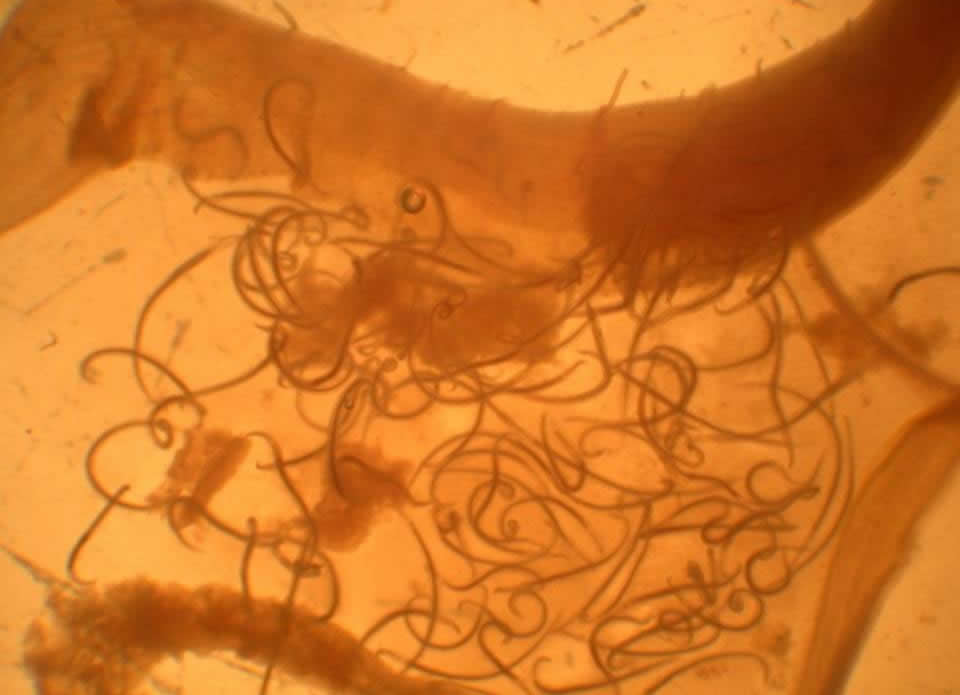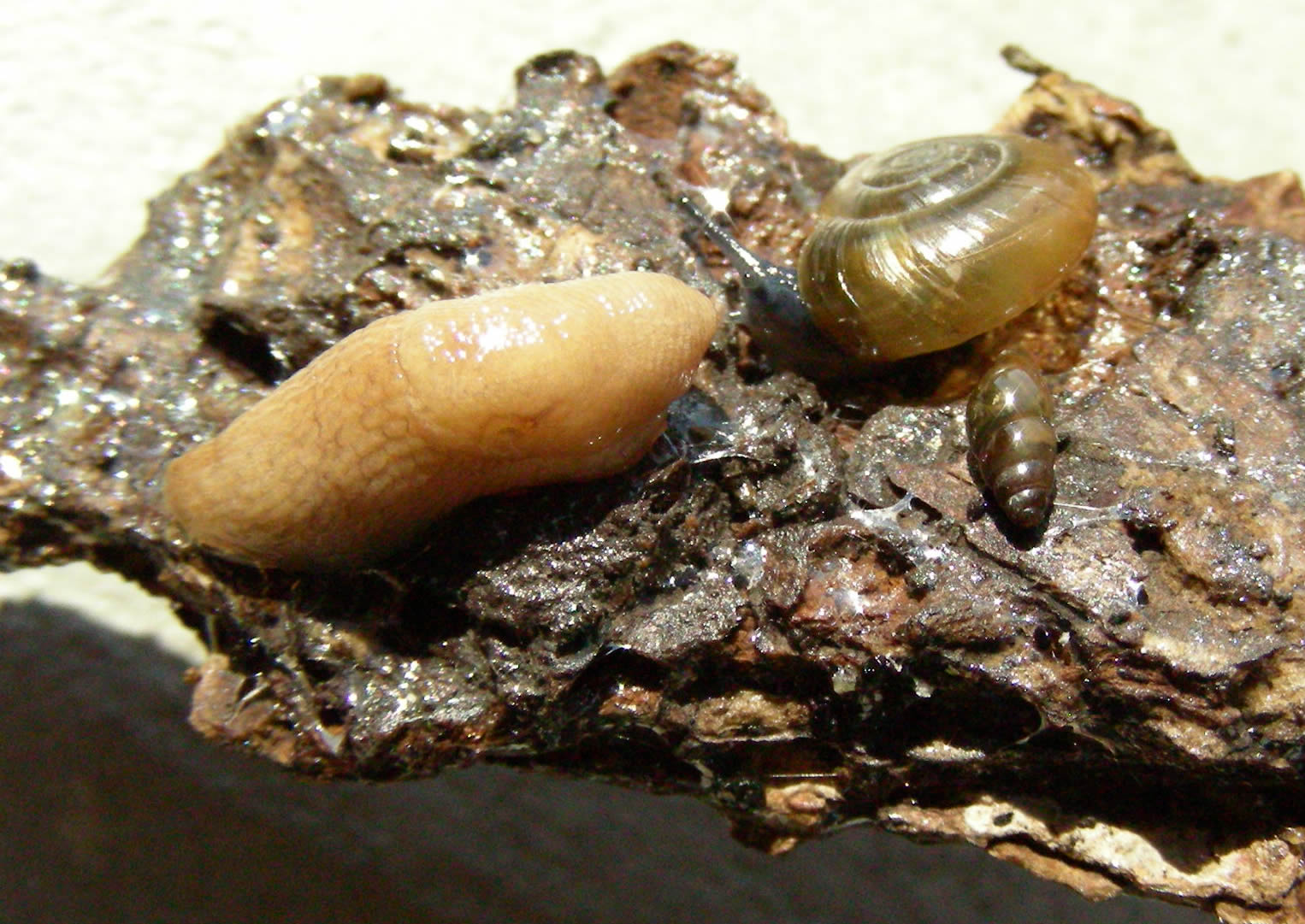
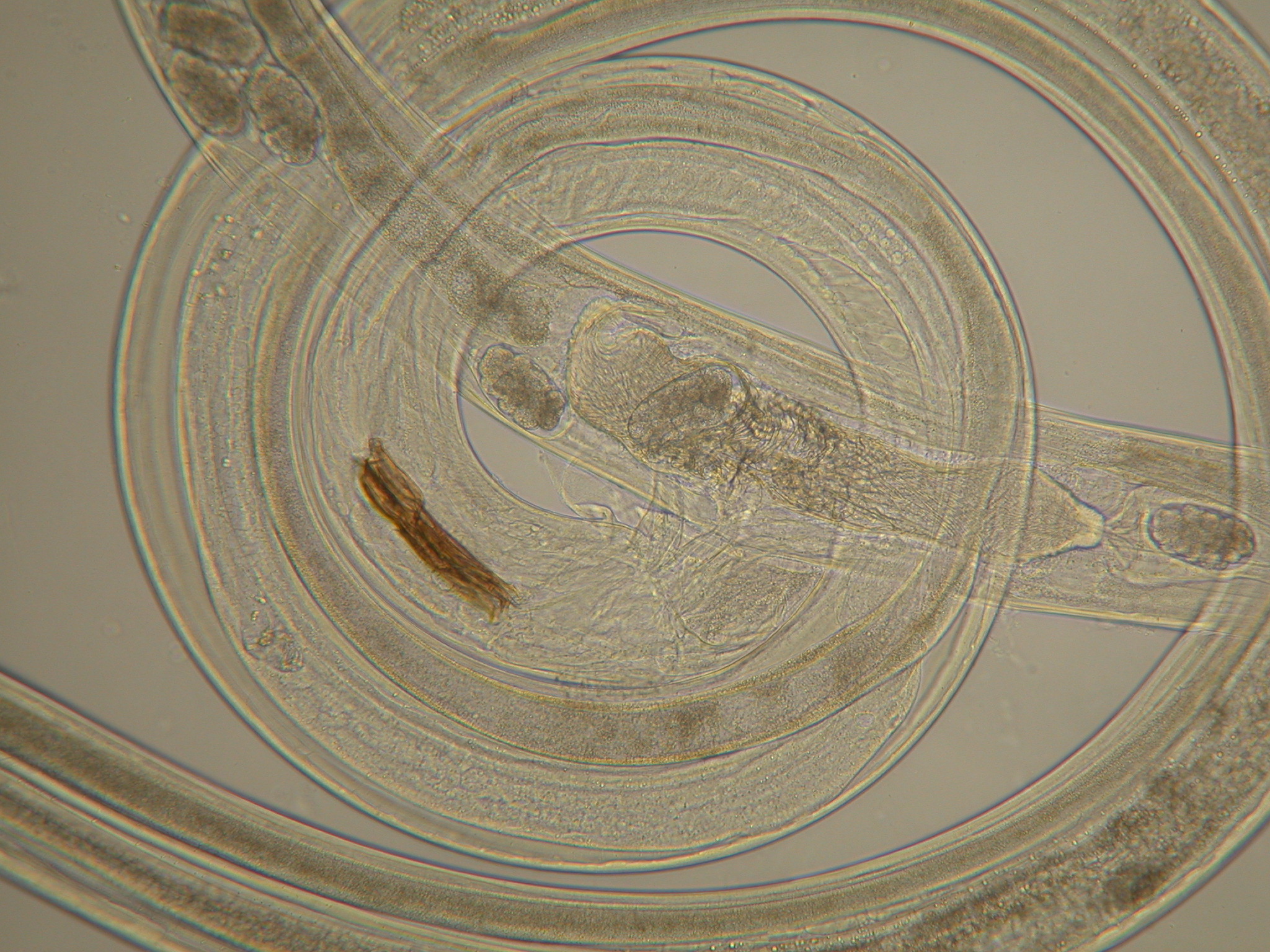
Most of the nematode species that infect amphibians have direct life cycles and infect frogs and toads in a terrestrial environment (see life cycle of Cosmocercoides variabilis below). Our current work on the transmission of amphibian nematodes indicates that there is a relationship between soil moisture and the distribution of these parasites in their amphibian hosts. In relatively moist environments these nematodes are predominantly found in terrestrial amphibians such as toads and less often in semi-aquatic and aquatic amphibian species; whereas in semi-moist environments these species switch from terrestrial toads to semi-aquatic and aquatic frogs, and are absent from all amphibian species in dry environments.
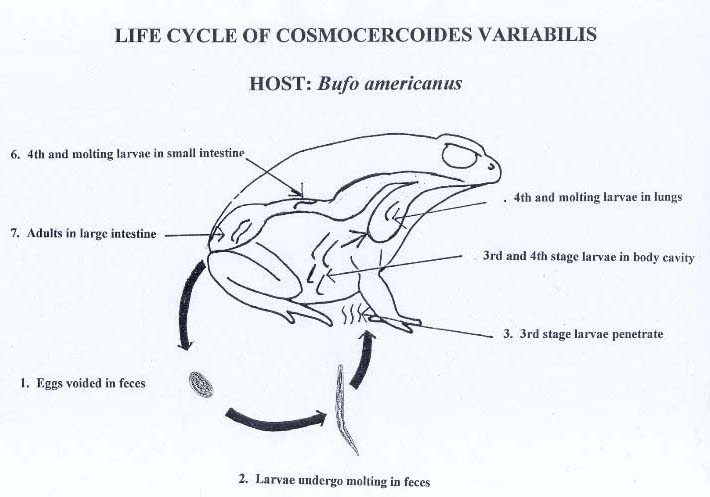
Adult female C. variabilis laying eggs and juveniles hatching.
Molting J3.
Toads being exposed and migrating J3 in body cavity.
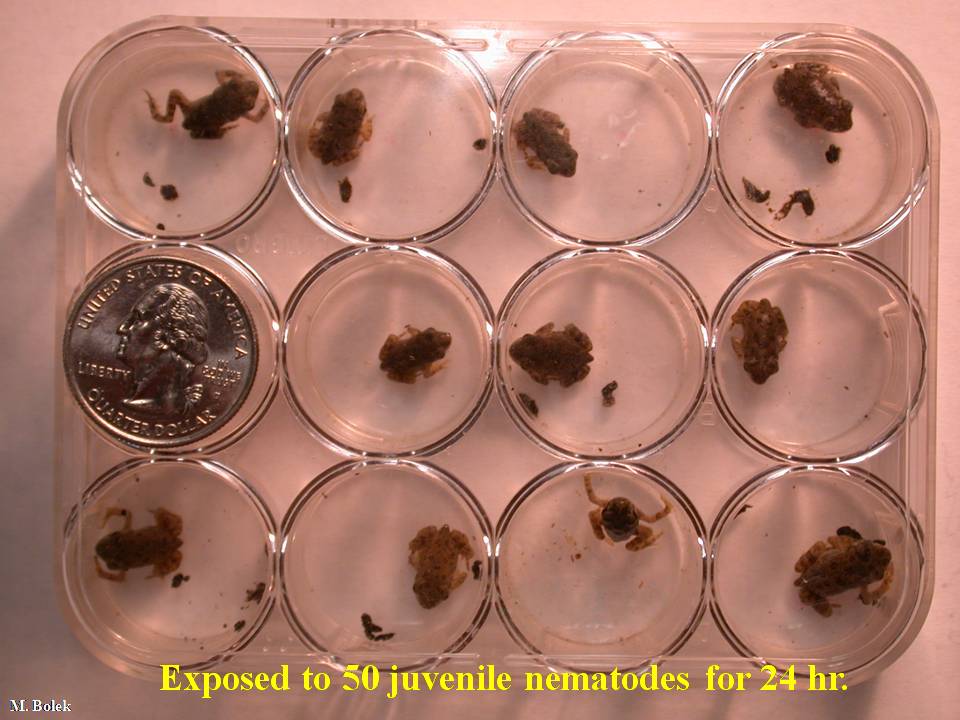
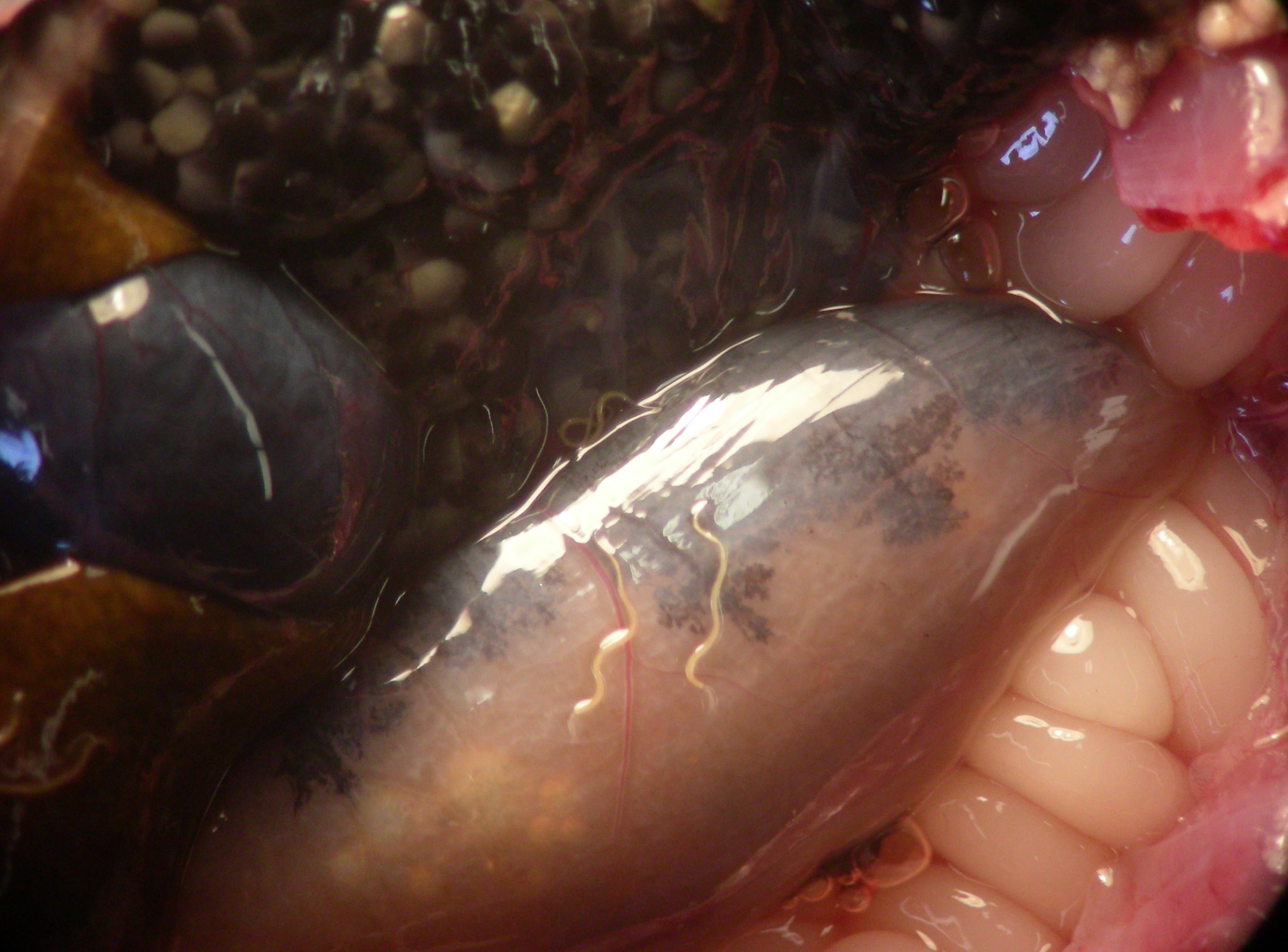
Adult C. variabilis in large intestine 30 DPE, and snail hosts for C. dukae.
